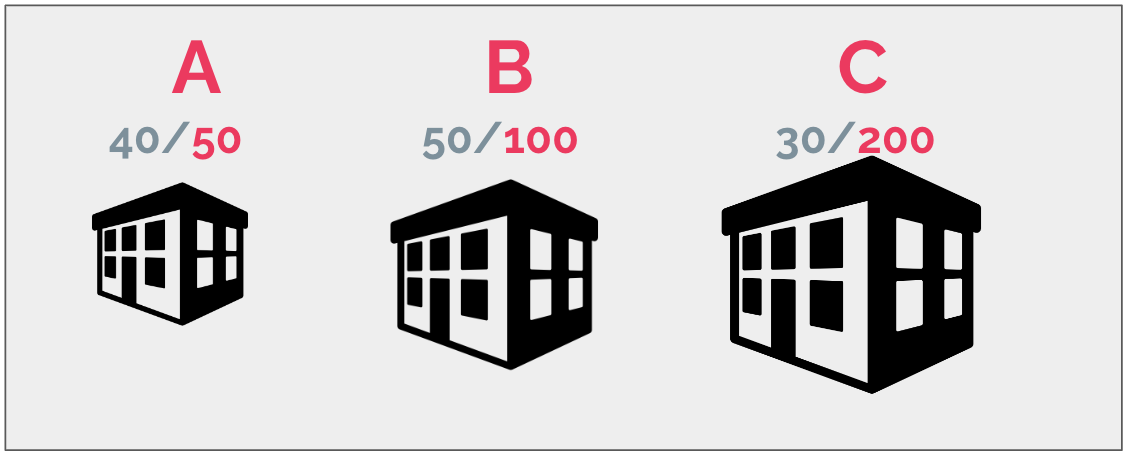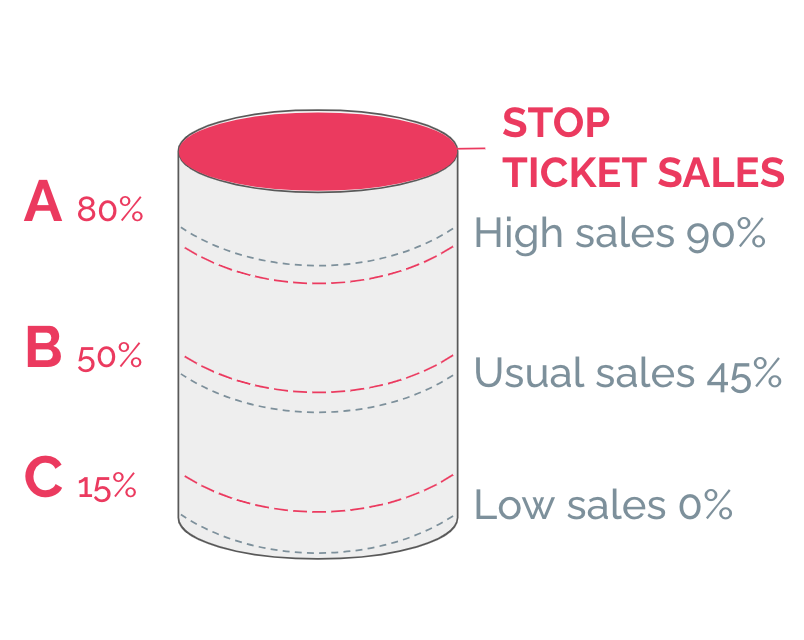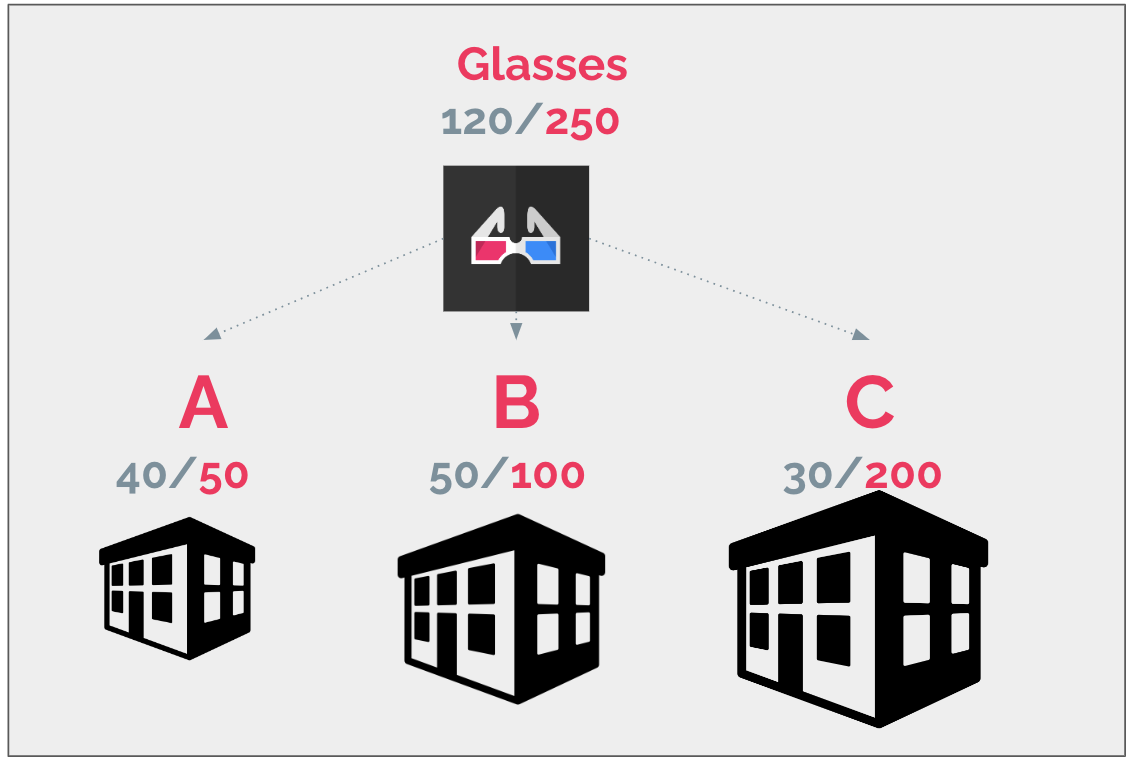Dynamic Pricing is a useful way to manage the number of visitors, make the most money, and sell tickets more effectively. It works best when combined with the Crowd Control solution. This way you can set limits on ticket sales for certain times, like specific dates, hours, and ticket types. Instead of having a strict limit on ticket sales, Dynamic Pricing lets you smartly change how appealing different times are. This helps guide visitors to choose other times and allows you to earn more from those who want specific time slots.
We would like to introduce Capacity Based Pricing to you:
1. When can I use Capacity Based pricing?
2. Key principles of Capacity Based Pricing
3. Example of Capacity Based Pricing
4. Example with Multiple Limits
1. When can I use Capacity Based pricing?
The truth is, you don't need to do much if you are already using Dynamic Pricing 'Plus' models and Crowd Control. When we team up the both services, Dynamic Pricing becomes even more effective with extra information. Now, we can understand the maximum number of guests you want to accommodate and how many spots are still available. We strongly recommend using both services together. In the following, we'll clarify how the capacity factor influences prices in a straightforward way.
💡 Keep in mind: When you apply Dynamic Pricing to tickets with unlimited capacity or not linked to a specific capacity pool, we can't precisely determine the number of visitors you aim to host. Dynamic Pricing will still work since we'll track the total sales of dated tickets and how they change over time, but it would not have the extra power of capacity information.
2. Key Principles of Capacity Based Pricing
Our new Capacity Based Pricing adjusts prices based on how many tickets are left. Here's an idea:
- If there are many tickets left (low demand), prices will be low
- If there are only a few tickets left (high demand), prices will be high
Capacity Based Pricing is closely linked to our Crowd Control service. In Crowd Control, you can decide the maximum number of tickets you want to sell by defining a maximum capacity. With Dynamic Pricing, we add extra limits to figure out when demand is low or high.
The default settings are:
- High sales = 90%
- Usual sales = 45%
- Low sales = 0%
Do you want to change the percentages of your capacity? Contact support@convious.com to redefine the limits for you.
3. Example of Capacity Based Pricing
Let's see how it works with a simple example. Imagine you have 3 rooms of different sizes. The regular price for each room is 15€. But, we've set a limit – the highest price can be 20€, and the lowest can be 10€.
Room A has 80% of its spaces taken, Room B is half-filled at 50%, and Room C has only 15% of its spaces booked.
Even though our advanced algorithms consider more factors, in this simple scenario, we can expect ticket prices as follows:
A - 19€ (pretty high demand)
B - 16€ (slightly higher than usual demand)
C - 11€ (pretty low demand)
Choosing Room C would be the cheapest option, encouraging people to go for it and spend less. If someone keeps choosing Room A, they'll have to pay more.
4. Example with Multiple Limits
Imagine another rule: besides the room limits, you also have an overarching rule. Take for example VR glasses. All rooms use the same glasses, and we don't have enough for all the seats in all the rooms.
Here's the occupancy breakdown:
Room A: 80%
Room B: 50%
Room C: 15%
Glasses: 48%
Let's see how this affects the prices for each room:
- Room A: We can sell 10 seats, and we have 10 glasses, no problem. Price: 19€ (pretty high demand).
- Room B: We can sell 50 seats, and we have 50 glasses, no problem. Price: 16€ (slightly higher than usual demand).
- Room C: We can sell 170 seats, but we only have 130 glasses at best. So, we can only sell a maximum of 130 tickets. To keep the glasses from running out too quickly, we shouldn't sell tickets too cheap. The adjusted score is 35%. Price: 13€ (less than usual demand).
When there are various limits on capacity, we consider their combined impact. If there's a shortage in one area, it causes prices to go up.
Curious to see how you can set up Capacity Based Pricing for your venue? Check out our next article: How to Set up Capacity Based Pricing
5. Webinar Recording
Capacity Based Pricing - The Innovative Dynamic Pricing Algorithm on 28th of February 2024
Kimberley Prenger, Revenue Optimization Specialist at Convious, walks you through:
- The science behind Capacity Based Pricing
- Differences between the old and new algorithm
- Benefits you can expect after switching to Capacity Based Pricing
- Practical information for a smooth and seamless switch




